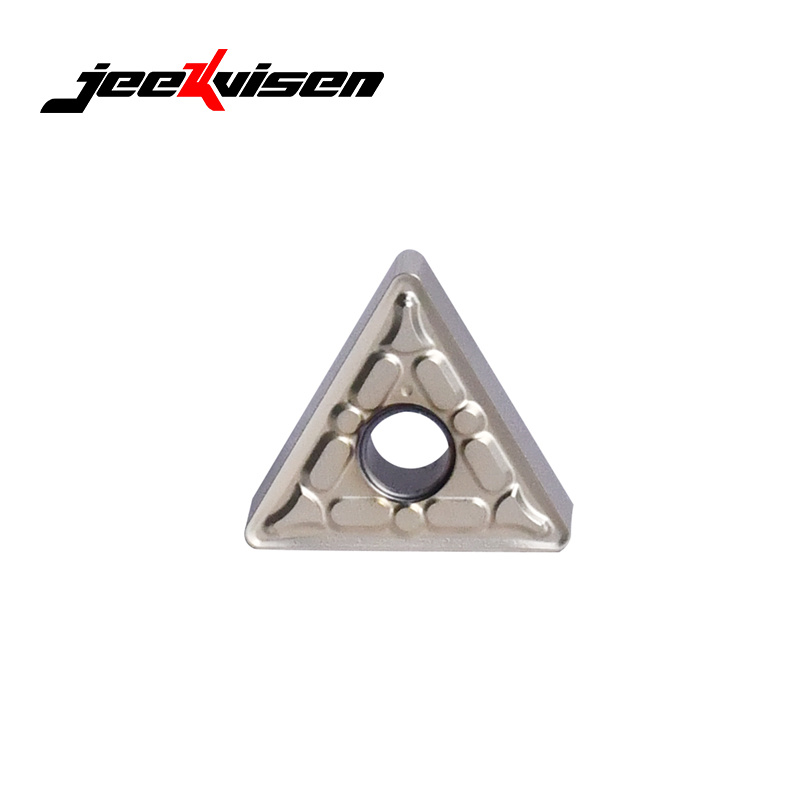07
2025
-
08
what is the cnc turning insert types?
The type of CNC turning insert can be identified by its geometry. Common insert shapes include regular triangle (T), diamond 80° (C), diamond 55° (D), square (S), pentagon (P), and round (R). The insert shape designation is a standardized method used to represent the geometric characteristics of inserts. The ISO standard uses a series of letters and numbers to define key insert parameters.
Triangular Inserts (TNMG, TPGH, etc.)
Triangular inserts have three cutting edges with a 60° tip angle. They offer good strength and versatility, making them suitable for a wide range of turning operations such as external cylindrical turning, facing, and internal boring. They are commonly used in roughing and semi-finishing applications.

Square Inserts (SNMG, SPGH, etc.)
Square inserts feature a 90° corner angle and high cutting edge strength, making them ideal for machining right-angled step surfaces, external cylindrical turning, and facing. They are also used in some demanding semi-finishing and finishing operations.
Diamond Inserts (CNMG, CPGH, etc.)
Diamond-shaped inserts are categorized by tip angle, typically 80° or 55°. The 80° inserts offer excellent tip strength and are suitable for general external and facing operations. The 55° inserts have a sharper angle, making them more suitable for internal boring, machining of stepped surfaces, and tight or confined areas.
Round Inserts (RNMG, etc.)
Round inserts, having no defined tip, provide excellent edge strength and impact resistance. They are commonly used for roughing operations on materials like cast steel and cast iron. Their geometry also makes them effective for facing large surface areas, helping to reduce surface roughness.
These insert shapes directly affect factors such as cutting edge strength, number of usable edges, and suitable machining operations. For example, diamond inserts, due to their sharp tip angles, are preferred for continuous finishing, while square inserts, with more robust edges, are ideal for heavy-duty roughing. Insert shape selection should be based on machining type (roughing vs. finishing), workpiece geometry, and machine tool rigidity.
For specific insert model recommendations, feel free to contact us — we're here to help you select the best solution for your machining needs.
Related news




